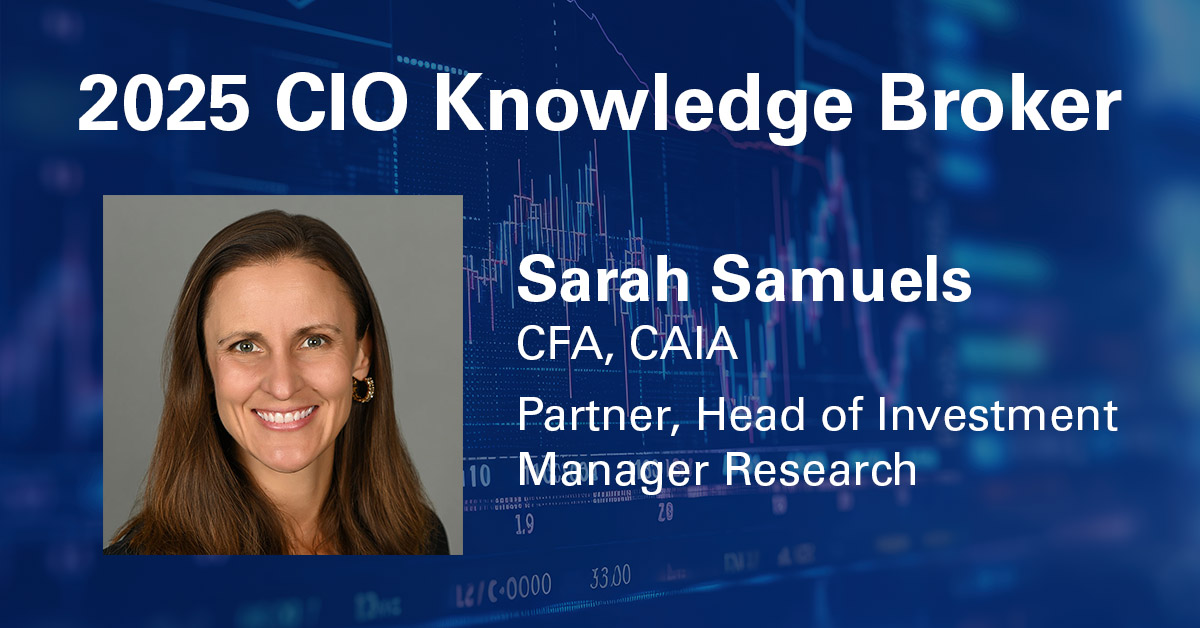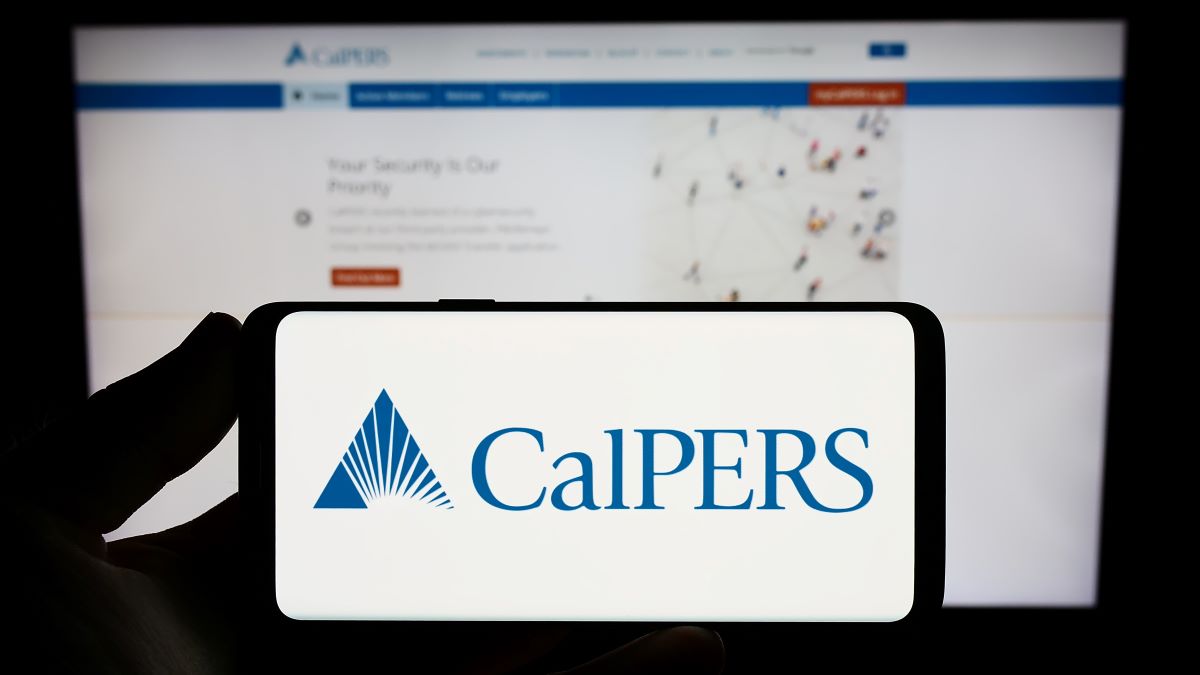Pensions & Investments: OCIO evaluators are ‘busier than ever’ with huge volume of searches amid policy fireworks
NEPC’s Scott Perry was recently quoted in Pensions & Investments discussing how the evolving corporate defined benefit landscape is reshaping the OCIO space. Visit Pensions & Investments to read the full article and explore how firms are navigating this shifting environment – or read the excerpts below.
An unusually volatile policy environment this year is accentuating the governance charms of outsourced CIOs and swelling the ranks of institutional plan sponsors looking to hire one, market veterans say.
. . .
The way the corporate DB space is evolving, it’s becoming almost project-based in some ways, agreed Scott Perry, a partner and head of OCIO portfolio strategy with NEPC. “You’re going to partner with them for maybe two or three years, helping them get to an end state where they are offloading their plan,” he said.
Click here to continue reading the full Pensions & Investments article.
Chief Investment Officer: Sarah Samuels Named to 2025 Knowledge Brokers List
NEPC’s Sarah Samuels has been named to Chief Investment Officer’s 2025 Knowledge Brokers list, view excerpts from her interview below or the full interview on the CIO site here.
Sarah is a partner in NEPC, which oversees $1.7 trillion in assets under advisement. Sarah leads the firm’s 45-person investment manager selection team across private and public markets, directing $4 billion annually in private markets commitments. Previously, she was managing director at Wellesley College and deputy CIO at Mass PRIM. Sarah serves on several boards, including the CFA Society Boston and Girls Who Invest, and founded the Boston chapter of PEWIN. She holds CFA and CAIA designations. Sarah is an angel investor and author of the children’s book “Braving Our Savings.” She also founded the 30 Seconds of Bravery movement to promote financial literacy.
. . .
CIO: What actionable thing have you learned over the course of your career that has proven itself this year?
SAMUELS: Bias exists in every corner of the investment world, from committees and boards to LPs and GPs. Over the past 20+ years, I’ve studied how to build teams and processes that rise above these biases to make clearer, more rational investment decisions. That means embracing second-level thinking, fostering a CIO mindset and designing structures that filter noise and anchor around true signals. These tools, while underutilized, help us avoid pitfalls like recency bias, herding, mistaking luck for skill or paying active fees for beta exposure. Ultimately, these tools create better investment outcomes and more resilient teams.
CIO: What asset classes look good to you now? Why?
SAMUELS: In today’s environment, characterized by a flatter efficient frontier, narrow market leadership and deal slowdowns across private equity, venture and real assets, this is a prime moment to be a provider of capital. Both LPs and GPs are facing liquidity constraints, driving demand for creative solutions like continuation vehicles, NAV loans and dividend recaps.
This dynamic creates opportunity on two fronts. First: Secondary markets, spanning venture, buyout, credit, real estate and infrastructure, are offering compelling entry points as institutional allocators seek liquidity. Second: Lending to GPs, corporations and real asset sponsors via transitional capital, capital solutions or asset-based lending can generate solid yields and diversified exposure.
But discipline is critical. Success in this market hinges on selecting the right partners who can navigate complexity and deploy capital thoughtfully.
CIO: How has institutional consulting changed in the last five years and what do you expect to change over the next five?
SAMUELS: The growth of OCIO services has reshaped consulting, and that trend will only accelerate. As fiduciary demands grow and internal resources shrink, OCIO offers a path forward. But success depends on alignment. Partnering with an OCIO that isn’t looking to drive profits to other business lines, but is truly focused on investment outcomes, will define the next era of trusted relationships.
Consulting is also becoming more investor-led. Our team at NEPC brings experience as LPs, GPs and asset managers; we’ve sat in every seat at the table. That perspective helps us deliver stronger execution, implementation and empathy for what clients face.
Clients themselves are evolving too: from public funds wanting real-time data access to endowments focused on mission and turnover to DC plans navigating litigation risks. Across the board, there’s a growing demand for technology, governance support and conflict-free advice. Consulting in the future won’t just be about expertise; it will be about empowering clients to operate with confidence, clarity and peace of mind.
Click here to read the full interview on the Chief Investment Officer site.
Pensions & Investments: CalPERS joins growing wave of pension funds offloading private equity stakes as sales volume hits record
In this Pensions & Investments article, NEPC’s Scott Perry discusses how institutional investors are reassessing private equity investments made in higher-valuation years and turning to secondaries as a strategic portfolio management tool. View the full article on Pensions & Investments’ site here or read excerpts below.
The California Public Employees’ Retirement System is exploring plans to reenter the secondary market sales arena, joining a growing list of public pension funds and endowments selling portions of their private equity portfolios.
. . .
While the current moment isn’t marked by the kind of distress asset owners felt during the global financial crisis, a number of big institutional investors still “find themselves overweight to private equity and also have sizable allocations to vintages they don’t have a lot of conviction in,” said Scott Perry, a partner with Boston-based consulting and investment firm NEPC, and head of portfolio strategy for the firm’s $130 billion outsourced CIO business.
“Think 2019, 2020, 2021 — vintages and investments that were made with higher valuations,” Perry said. “And they now have a view that those investments are unlikely to be really strong, successful investments, and so they’re looking to get out (to) free up the capital for investment today, rather than hold on to it and end up with mediocre outcomes,” he said.
Click here to continue reading the full Pensions & Investments article.
PlanSponsor: Retirement Income in DC Plans: The Way Forward
PlanSponsor recently featured insights from NEPC’s Bill Ryan and Mikaylee O’Connor in an article examining the future of retirement income solutions within defined contribution plans. View the full piece on PlanSponsor’s website to learn more about where the industry is headed.
The retirement income conversation within defined contribution plans is reaching a new level. Fueled by legislative tailwinds, technological advances and shifting participant needs, the last five years have seen a surge of new ideas, tools and products.
. . .
“Recordkeepers are expanding their platforms to support more retirement income solutions. From integrating insurance-based solutions to improving education and advice, their capabilities are evolving to meet the changing demands of the DC system. This shift is not just about enabling income payments—it is about building the infrastructure to support decumulation.”
. . .
“Still, the path forward for many is not clear. While industry innovation is necessary and healthy, the current environment feels like “throwing spaghetti at the wall.” There is a lack of consistency and little agreement. With so many new products across both guaranteed and nonguaranteed income—plan sponsors must navigate a maze of features, trade-offs and implementation considerations.”
. . .
“Start by defining the problem: Who are you targeting? For example, only about 14% of all participants in DC plans tend to be retirement eligible. What risks are you trying to address? Spending behavior, volatility, longevity? Are you prioritizing guarantees, flexibility or simplicity? Once these questions are answered, you can begin to evaluate solutions and determine your commitment level as a plan sponsor.”
. . .
“Plan sponsors must also ensure their plan design, recordkeeping and administrative operations are retiree friendly. Review questions about the flexibility of available distribution options and the types and amount of related fees and paperwork. While 93% of plan sponsors offer systematic distributions, we see 18% of older participants (at least 65 years olds) using them. Retirement income is not just about what is in the plan—it is also about how easy it is to get money out in a way that aligns with participants’ real-life needs.”
Click here to read the full article on the PlanSponsor site.
Planadviser: Could Managed Accounts Replace TDFs as Plan QDIAs?
NEPC’s Mikaylee O’Connor was recently quoted in this PLANADVISER article exploring the evolving role of managed accounts as potential replacements for target-date funds (TDFs) as plan default options. Visit PLANADVISER to read the full article and see how industry experts, including Mikaylee, are weighing in on this shift in defined contribution plan design.
One of the most important decisions retirement plan sponsors and advisers have to make is which qualified default investment alternative makes sense for a plan’s participants. Authorized by the Pension Protection Act of 2006, with final regulations issued by the Department of Labor in 2007, QDIAs provide fiduciaries a safe harbor when defaulting participants into approved investments.
. . .
Another advantage managed accounts could have in comparison with TDFs as a choice for QDIA is that managed accounts allow participants to leverage the core investment menu and potentially invest outside of the investment menu, allowing for both active and passive management, explains Mikaylee O’Connor, a principal in and head of defined contribution solutions at investment consulting firm NEPC.
“You have a diversified mix of investment managers, so you’re not just solely invested in the single target-date-fund manager,” O’Connor says.
. . .
O’Connor says she would be a proponent of managed accounts as the default with the right provider—in part because there is so much data in the recordkeeping system that could be used to personalize plans—if the fees came down.
. . .
O’Connor says she has not seen this as much and believes it is typically more popular among smaller plans.
Yet as is so typically the bottom line, O’Connor maintains she would be a proponent of the hybrid QDIA approach—if the fees for managed accounts decreased.
Click here to continue reading the full PLANADVISER article.
Bloomberg: Yale’s $2.5 Billion Private Equity Sale Tests Its Vaunted Endowment Model
NEPC’s Sarah Samuels was recently featured in a Bloomberg article examining how Yale’s private equity sale is prompting a broader conversation about the future of the endowment model at elite universities. Visit Bloomberg’s website to read the full article.
“What we’re seeing now is fear, which is common when there’s uncertainty,” said Sarah Samuels, a partner at consulting firm NEPC and a former investor for Wellesley College. Some investors don’t have “a ton of confidence that they should continue committing to private markets at the same pace.”
. . .
Consulting firm NEPC is advising clients to be more selective with private equity investments and to explore options to make sure they have enough liquidity, such as holding more cash or Treasuries or exploring a credit line or bond sale, according to Samuels.
Click here to read the full article on the Bloomberg’s site.
Barron's: Wall Street Is Marketing Private Equity Investments. The Rich Are the Targeted Buyers.
NEPC’s Sarah Samuels was recently quoted in Barron’s, exploring the growing push to open private markets to individual investors through semiliquid and evergreen funds. Visit Barron’s to read the full piece and hear Sarah’s perspective on the opportunities — and risks — for private-wealth investors in this evolving space, or read the excerpts below.
As pension funds, sovereign-wealth funds, endowments, and other institutional investors pare private-equity stakes to generate cash and rebalance their portfolios, Wall Street has gone looking for new buyers: retail investors who have long been shut out of private markets.
. . .
The fact individual investors haven’t widely participated in private markets means they are “getting increasingly concentrated portfolios in the public markets,” says Sarah Samuels, partner and head of investment manager research at investment consultant NEPC.
Investing in private markets through evergreen structures allows individuals to get access to more diverse opportunities, Samuels says. But she also cautions that investors need to tread carefully. Even semiliquid funds aren’t as liquid as public funds, and the fees on these vehicles are much higher—generally around 1%, she says, versus an average expense ratio of about 0.34% last year for all U.S. mutual funds and ETFs, according to a recent analysis by Morningstar.
The success of private market strategies also heavily depends on the quality of the fund manager, Samuels says. The difference in outcomes between the best manager of a large-cap stock strategy and the worst is about 5%, compared with more than a 45% spread between the best and worst private-market funds in certain strategies, she says.
She suggests private-wealth investors limit their allocations to private markets to a “target range that’s meaningful enough to move the portfolio, but low enough that there isn’t going to be a liquidity issue.”
Buyouts: LPs consider benching old benchmark methods and gauges
NEPC’s Kristin Reynolds was recently featured in Buyouts, offering her perspective on the challenges institutional investors face with benchmarking in private markets. Visit Buyouts’ website to read the full article and explore how evolving performance metrics are reshaping investment conversations.
The standard mode used to communicate risk-return goals is being re-examined given new frustrations with long-held tools.
. . .
Consulting firm leader Kristin Reynolds puts it like this: if you’re looking for the perfect benchmark for gauging risk and returns in the private markets, it’s not out there.
. . .
Reynolds, a partner and practice group director at NEPC, says that across the spectrum of institutions there’s an eagerness to use benchmarking to figure out the opportunity cost of leaving money in private market assets instead of public equivalents. But she adds that LPs aren’t always getting a clear enough picture of that with current benchmarks.
Institutional investor staff, boards and consultants have been left with uncomfortable conversations about why things look so different than selected benchmarks. And, according to Reynolds, that’s led to a shift in focus to indexes that weigh portfolio performance against that of all the managers a fund could have invested in.
“That has been better for most organizations that are trying to understand how PE moves relative to other privates, ” she says. “But the downfall of that is really you might be building a portfolio that’s heavily venture-weighted or has other specific traits. Meanwhile, these indexes are painting with a very broad brush.”
Outside of PE, private market benchmarking doesn’t get any easier, Reynolds says. “In fact, for an asset class like private credit, it can be harder. That’s because there’s less observations. Once you take an index of the big providers and start slicing and dicing them, you end up with 15 different managers in an index, and not enough for statistical significance.”
. . .
Reynolds adds that the manipulation of IRR – sometimes demonstrated to LP boards as measures of success – can be done by timing when a manager calls capital and how much debt they’re using in the fund to smooth out the capital call process.
“When people really focused on how managers have control over this measurement, they started thinking more about metrics such as total value to paid-in (TVPI) and now distributed to paid-in (DPI), ” she says. “The impact of a focus on DPI is that an LP may not focus on a manager’s second or third fund if distributions from the last fund are still really low.”
. . .
Reynolds says when there’s a movement that profound in the benchmarks for an asset class, it kick-starts conversations between an LP’s staff and board about whether there should be a scaling back of pacing. And when an investment team’s performance is often measured by its record of overdelivering compared to benchmarks, friction is always a possibility.
Planadviser: Bringing Advice to the Masses
NEPC’s research on managed account adoption trends is featured in this PLANADVISER article, highlighting how plan sponsors are increasingly exploring personalized financial advice solutions for participants. Visit PLANADVISER to read the full article or read excerpts below.
When offered, managed accounts can provide a full financial planning experience—from accumulation through retirement.
. . .
Not everyone in the industry, though, subscribes to that sentiment. A February NEPC paper counters it, pointing out that high fees tend to erode the value of managed accounts, as a fee of 30 basis points typically requires a participant to increase his equity exposure by 20% to 30%, or by two to three TDF vintages, to achieve a similar net-of-fee return. Moreover, NEPC argued, participants paying the lower fee of 15 bps, for example, could anticipate returns comparable to a typical TDF investor. Nevertheless, despite the concern about fees, the NEPC paper says, “we believe managed accounts can deliver high quality and efficient investment portfolios for participants.”
. . .
Still, the NEPC paper points out that fiduciaries have a responsibility to understand how asset allocation in managed accounts is determined. “The usage, application and magnitude of personalization factors increasingly hinge on the approach of each provider. Furthermore, most providers seem to rely heavily on a single factor that shapes much of their portfolio construction methodology.”
Click here to continue reading the full PLANADVISER article.
Pensions & Investments: Private markets haven't cracked the 401(k) code. Empower thinks it's found a way.
NEPC was recently quoted in Pensions & Investments discussing the challenges and opportunities of integrating alternative investments into defined contribution plans. View the full article on Pensions & Investments’ site here or read excerpts below.
Empower’s decision to offer alternatives investments to defined contribution participants faces challenges in an industry that, researchers and consultants say, avoids such investments due to concerns about cost, transparency, liquidity and participant interest.
. . .
Although each managed account provider is different, NEPC reported in February that DC industry trends are squeezing such services.
“We find U.S. DC plans are becoming increasingly passive (and) this shift is driving more plan assets into publicly traded global stocks and bonds,” the report said.
“This growing constraint affects both managed accounts and target-date fund providers alike,” NEPC said. “Over time, as these investment solutions become more commodity like and less differentiated, competition is likely to focus increasingly on price.”
Last year, NEPC “began to see a shift in plan sponsor sentiment, with plans actively terminating managed accounts services due to stalled fee negotiations,” the report said. “This change is occurring at a much faster rate than providers had anticipated.”
Managed accounts remain a small portion of DC plans, according to a March review by NEPC of fees. Although 46% of plans offered managed accounts, only 9% of participants used them, accounting for 8% of total plan assets.
. . .
The NEPC survey was based on interviews with 14 record keepers, covering 278 plans from 137 clients with aggregate assets of $408 billion and 3.2 million participants.
Click here to continue reading the full Pensions & Investments article.









